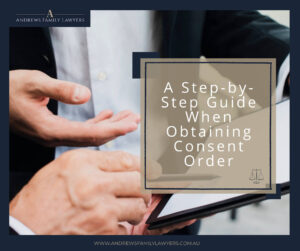Dealing with divorce in Australia can be overwhelming. Our guide simplifies this challenging journey, offering clear, step-by-step advice on how to file a divorce in Australia.
This article provides essential insights to help you through the divorce process.
What is a divorce?
In Australian law, a divorce is the legal termination of a marriage. It is a formal process that legally ends a marriage and allows the former spouses to remarry. You can pursue a divorce through a sole or joint application.
It’s important to note that divorce only ends the marriage. It doesn’t include a property settlement or cover parenting arrangements. These issues are dealt with separately and can be resolved through mutual agreement or court orders.

5 Simple Steps on How to File a Divorce in Australia
Step 1: Check Your Eligibility
Before you apply for a divorce, you should ensure that you are eligible. This is especially crucial if you are married overseas. Here are some considerations.
Marriage validity
Most marriages legally recognised by an official foreign authority will be valid in Australia. But it’s worth looking at what makes a valid marriage. A marriage must meet all of the following criteria:
Both parties must freely consent to the marriage without coercion or duress.
Both individuals must be at least 18 years old. If one party is aged 16 or 17, a court order and parental or guardian consent are required.
The parties must not be closely related by blood. Close relatives include parents, siblings, and direct ancestors or descendants.
Any previous marriages must be legally dissolved (i.e., through divorce or annulment) before entering a new marriage.
Both parties must understand the nature of the marriage ceremony.
Separation period
Before getting a divorce, couples must demonstrate that they have been separated for at least 12 months before their application. This requirement reflects Australia’s no-fault divorce policy. The only reason needed for a divorce is the understanding of at least one party that the marriage has irretrievably broken down.
Residency requirements
Couples married overseas may need to consider the residency requirements of an Australian divorce. They are as follows:
- Australian Citizenship
Either party must be an Australian citizen by birth, descent (having an Australian parent), or by grant of Australian citizenship. - Ordinary Residence
Alternatively, either party must ordinarily reside in Australia. This means living in Australia on a regular and consistent basis. - Residency Duration
The person meeting the residency requirement must have been living in Australia for at least 12 months immediately before filing the divorce application. - Intention to Reside Indefinitely
If the residency is based on ordinary residence, there must be clear evidence of an indefinite intention to reside in Australia. This can be demonstrated through various means, such as employment, owning property, or having family ties in Australia.
Marriages of less than two years
There is a unique requirement for ending a marriage lasting less than two years. Before filing for a divorce, the couple must:
- Attend Counselling
The couple is required to attend a counselling session to discuss the possibility of reconciliation. This counselling explores whether the marriage can be salvaged or the decision to divorce is final. - Provide a Counseling Certificate
The couple must provide a certificate from a qualified counsellor when filing for divorce. This certificate confirms that the couple has considered reconciliation with the help of a counsellor. The couple must explain why counselling was impossible if it was not attended.

Step 2: Demonstrate Separation
Typically, you demonstrate separation through the cumulative weight of evidence. The simplest way to show you have separated is to begin living at different addresses. You might also point to other factors, such as:
- Separating your finances;
- Maintaining different social circles;
- Informing family and friends of the separation;
- Notifying government agencies like Centrelink.
Separation under one roof
The Federal Circuit and Family Court understands that not everyone has the means to maintain separate residences. To account for this, the law permits couples to remain at the same address, provided they can demonstrate that they are leading separate lives.
The parties must each provide an affidavit explaining their circumstances. Details the Court generally expects couples to provide include:
How domestic duties are separated;
Sleeping arrangements;
How the parties communicate;
How bills are handled;
Details of their social life.
The parties may also need to provide an affidavit from a third party. This will usually be a friend, family member or colleague. This affidavit may include details such as:
How they were told about the separation;
Whether the parties have mentioned that aspects of their domestic circumstances have changed;
Any other details indicating the apparent separateness of their living situation.

Discover: The True Meaning of Separation
Step 3: Prepare your important documents
Depending on your circumstances, several documents may be necessary for your application.
Marriage certificate
You must include your marriage certificate in your divorce application. If you can’t find your marriage certificate, you can request a replacement from the Registry of Births, Deaths and Marriages. The current fee for a replacement is $54.40, which includes standard postage.
Marriage certificate translation
If your marriage certificate is in a language other than English, you must get the marriage certificate translated. The translation must be provided by a translator accredited by the National Accreditation Authority for Translators and Interpreters (NAATI).
When the translator provides the translated certificate, they must include an Affidavit Translation of Marriage Certificate. This affidavit sets out their qualifications to make the translation.
Counselling certificate
If you were married for less than two years, you must include a counselling certificate with your application. This certificate acknowledges that you underwent the mandatory marriage counselling before applying for divorce.
Documenting your separation
Various documentation can contribute to proving a separation, including:
- Affidavit from the parties
An affidavit from the parties stating the date of separation and detailing the circumstances of living separately. - Affidavits from Friends or Family
Statements from friends, family, or neighbours detailing their observations of your living arrangements and social activities. - Evidence of Separate Lives
This can include proof of separate bank accounts, grocery and household bills, sleeping arrangements, and evidence of separate social lives (for example, social media posts, invitations, memberships in clubs or groups). - Correspondence
Copies of any written communication between you and your spouse that discusses the separation, such as emails or text messages. - Legal Documents
Any legal agreements or documents drawn up during the separation period, such as financial agreements or parenting plans. - Counselling or Mediation Records
If you attended counselling or mediation, records of these sessions can help demonstrate that you were working through separation issues.
Proof of residency
If you were married overseas, you may need to provide evidence of your citizenship or residency. This may include:
An Australian passport;
A Visa Entitlement Verification Online check;
Australian Citizenship Certificate.
The Court may also require you to provide evidence that you have made Australia your primary place of residence for the foreseeable future, including:
Details of employment;
Rental agreements or mortgage documents;
School/University enrolment documents;
Tax returns;
Government correspondence sent to your Australian address.

Step 4: File Your Divorce Application
Once you have verified your eligibility, satisfied the separation requirement and gathered the necessary documents, you can now file your application. It is recommended to file for divorce online. The basic process is as follows:
- Register an account on the Commonwealth Courts Portal;
- Select The ‘Application for Divorce’ option;
- Complete the application form;
- Upload all necessary supporting documentation;
- Print out the application;
- If you’re filing a joint application, both parties must sign the Affidavit of eFiling before a justice of the peace;
- Download the brochure Marriage, Families and Separation;
- Submit the application and pay the filing fee ($1060 as of 1 July 2023);
- Select a date for a court hearing. Joint applicants aren’t required to attend the hearing.

What if you’re filing a sole application?
After submitting the application, sole applicants must serve the divorce papers on their former spouse. The documents you must serve are the following:
- A sealed copy of the Application for divorce with an attached notice of application for divorce;
- A sealed copy of the Affidavit for eFiling;
- A copy of the Marriage, families and Separation brochure;
- An Acknowledgment of Service (Divorce);
- A letter requesting your spouse sign Part C of the Acknowledgment of service and send it back to you. The letter should advise your spouse to keep a copy of the divorce application;
- A stamped and self-addressed envelope your spouse can use to return the Acknowledgment of Service (Divorce).

For more information, read our blog Important Things You Should Know About Divorce Applications in 2024
Service methods
Service by a third party
There are several ways you may serve the documents. The most common is service by a third party who is over 18. This may be:
A family member, friend or colleague;
A professional process server.
Once they affect service, the server should complete the Affidavit of Service by hand and attach the Acknowledgment of Service. If the server is unfamiliar with the spouse being served, the applicant must complete an Affidavit proving signature.
Service by post
You may also be able to mail the documents to your spouse. You should only use this method if you’re confident your spouse will sign and return the Acknowledgment of service. Once you receive the signed Acknowledgment of service, you must complete the Affidavit of Service – by post. You must sign part C of the Affidavit of Service – by post before a Justice of the Peace or solicitor.
Serving spouse’s lawyer
You may serve your spouse’s lawyer if they agree to accept service. In this case, you won’t need to complete an Affidavit of Service by hand.
Substituted service
You may have trouble locating your spouse and cannot serve the documents. In such circumstances, you may apply to the Court for substituted service. This allows you to serve a third party you’re confident will bring the divorce application to your spouse’s attention. A third party may be your spouse’s family members, friends or colleagues. The Court must be satisfied that you made all reasonable attempts to serve your spouse.
To apply for substituted service, you must complete an Application in a Proceeding and an accompanying affidavit. The affidavit should detail what attempts you made to complete the service, such as:
- What attempts did you make to contact your spouse or enquire about their whereabouts;
- When and under what circumstances did you last communicate with your spouse;
- Your spouse’s last known address;
- Details of any child support or maintenance arrangements;
- Any reasons why your spouse may be uncontactable;
- Any costs associated with your service attempts and if the expense is causing financial hardship.
Dispensation of service
If you can prove to the Court that you have made all reasonable attempts to serve your spouse, you may be granted dispensation of service. This waives the service requirement and allows you to proceed with your application.
Do I need to attend court?
There are circumstances when a sole applicant may be required to attend a court hearing. Attendance is necessary in the following situations:
The sole applicant has a child of the marriage who is under 18 at the time of the application;
The applicant indicated they wished to attend;
The respondent opposed the divorce application with a Response to divorce.
You may also need to attend if you have applied for substituted service or dispensation of service unless advised otherwise by the Court.
While not required, it’s advisable to attend the divorce hearing if you have to provide additional information on circumstances, such as:
Separation under one roof;
Ending a marriage of less than two years.

Step 5: Finalising the Divorce
Once you’ve completed an application for divorce, the divorce order will come into effect one month and one day after the Court accepts the application. If necessary, the Court may request additional information before granting the order.

How can you deal with court fees?
Some people have trouble affording the filing fees associated with divorce. The cost of a divorce application cannot be waived, but you may be able to get a reduced fee. You must pass a three-part financial hardship test to get a fee reduction.
Conclusion
Navigating a divorce in Australia, particularly when married overseas, involves understanding and fulfilling specific legal requirements.
Our guide covers the essential steps on how to file a divorce in Australia. With this knowledge, you can approach divorce more clearly and confidently.
Remember, while this guide provides valuable insights, seeking personalised legal advice is always recommended for your unique situation.
If you need assistance with family law matters, Andrews Family Lawyers can help.




